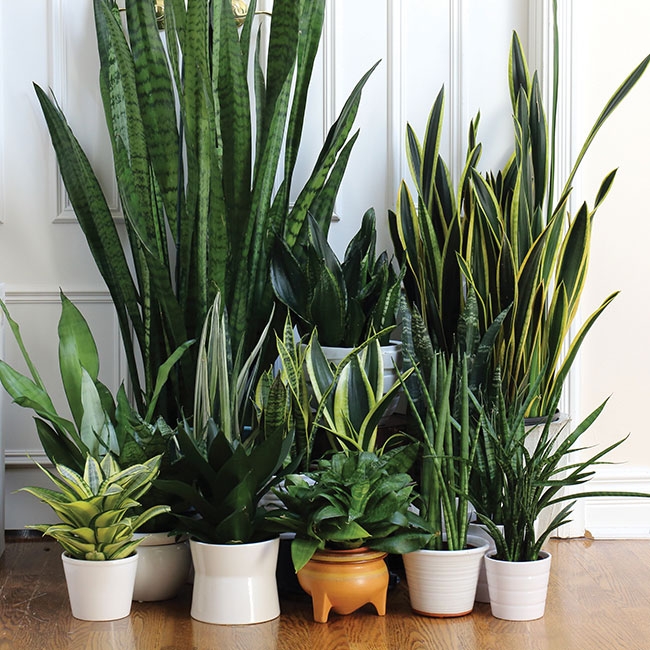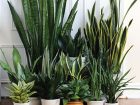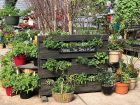
Features
Business
Retail
Adapting to the evolving needs of today’s consumers
As plant parents look for niche products and neat experiences, IGCs look to fulfill that need.
October 28, 2019 By Anne-Marie Hardie
 New plant consumers are looking for a space to fulfill their needs, and garden centres could be it. Photo credit: D. Cheng
New plant consumers are looking for a space to fulfill their needs, and garden centres could be it. Photo credit: D. ChengHomes are becoming smaller, lifestyles are busier, and the number of locations for purchasing plants and their associated products have increased. Shoppers can purchase their plant products almost anywhere, including online shops, big box stores, niche urban plant shops, and traditional independent garden centres (IGC).
“Many new plant keepers have their first plant shopping encounters with new urban plant shops that do not identify themselves as ‘garden centres,’” says Leslie Halleck, certified professional horticulturist and owner of Halleck Horticultural, LLC. “Therefore, many of these consumers don’t identify themselves as ‘gardeners.’ In fact, for these new plant consumers, the term gardening itself can become very intimidating.”
“Gardening to some customers can be a negative, it represents labouring and hard work,” says Will Heeman, chief daymaker at Heeman’s. “Customers don’t have to like gardening to like plants. Instead, they can become captivated by the story of a plant that may fit into a garden.”
To be a part of this shopping landscape, the garden centre needs to be agile and adaptive, transforming its product selections, experiences, and even language used to respond to the needs of today’s shoppers. This begins by understanding what consumers are looking for.
Value-driven Purchases
Shoppers are seeking out plant materials and products that respond to their values. This includes native plants, pollinators, locally grown food, and plant nurturing.
Increasing conversations around the importance of local products, as well as a push from environmental groups about the need to reinvigorate these species have provided newfound energy in native plants. “This year we have seen a definite growth in this area,” says Heeman. “Part of it may be because one of our main suppliers has now offered these plants in a larger one-gallon format over previous 3.5” pots, making it easier for shoppers to anticipate how these plants will appear in their gardening space.”
Selecting plants for pollinators continues to gain momentum. Shoppers not only want to add pollinator plants to their homes but are embracing the idea of creating habitats for these species. IGCs can respond to this interest by creating displays of pollinator-friendly, native, and larvae host plants, offering seminars and DIY workshops, and showcasing products like bee habitats and butterfly feeders that will enable their shoppers to create spaces for these endangered species. “If I told someone five years ago to plant goldenrod for monarchs they would have thought that I was crazy,” says Niki Jabbour, author and edibles expert. “But, now, people are actively seeking native plants like goldenrod, which offers nectar for migrating monarchs, and milkweed, a larval food source for monarch caterpillars. People are not only more tolerant about damage from caterpillars, they are actually excited when the milkweed plants are eaten.”
Creating a Space for the Locavore
Food gardening is one area that appears to be penetrating all segments. “We are continuing to see an increasing demand for growing your own foods, whether it’s because [consumers] like the flavour of fresh food or are seeking the reassurance that the product that they are consuming hasn’t been sprayed or contaminated,” says Emily Tregunno, Halifax Seed Company. Tregunno finds that interest has grown in season extension and indoor growing, with consumers seeking indoor set-ups to grow greens, tomatoes, and peppers year round. IGCs can transform their spaces into the go-to location for budding food gardeners by offering both the core products and hard-to-find species (e.g. hops, cucamelons, heirlooms), and introducing innovative experiences to explore plants including workshops, events, and seminars.
Plant Parenting
The houseplant trend continues to be a strong one. Urban retail shops are jumping on, offering niche locations where shoppers can come in and discover new, exotic plants to adopt. However, this doesn’t mean that garden centres can’t also become leaders in this space. “Many of these new plant keepers and indoor gardeners are also completely new to traditional garden centres and aren’t necessarily aware of their presence,” says Halleck. These plant newbies may have developed an interest through social media feeds and are now seeking a space to fulfill their needs. “There is a huge opportunity for garden centres to tap into this growing customer base,” she shares.
Instead of gardeners, these new plant keepers have embraced the label and concept of plant parenting. According to Halleck, plant parents are finding that plant care helps to reduce stress and anxiety, which is one reason why this trend is making waves. In addition, plants are easier to manage than traditional pets, enabling this group of individuals to use their nurturing skills while also creating a beautiful, living space in their home. Tregunno has noticed a rise in demand for houseplants, particularly in the 18 to 35 demographic. “I feel that there are a lot of social influencers out there who are helping drive this demand. Houseplants are back in vogue again, and it’s absolutely wonderful to see,” she says.
Platforms like Instagram and Pinterest have reinvigorated planting, providing a format for shoppers to review, share, and post their plant journeys. For Heeman’s, their Instagram following doubled over the course of four months this year. “We use stories to talk about what is new, how to care for plants, while providing education in the IGTV video format.” This helps to break down barriers for shoppers who may have previously been intimidated by gardening.
Instagram influencer, author, and self-professed plant parent Darryl Cheng is one of those individuals helping to drive interest in plant parenting. With over 389,000 followers, Cheng’s scientific approach to planting has garnered interest from a new generation of plant parents. Cheng’s journey began four years ago, when his mother asked for assistance in creating an indoor garden. “I began to research plant care, and the language and information were incredibly bland and prescriptive,” says Cheng. “And so, I decided to use my engineering background to take a very scientific approach to plant care, using social media as a forum to share my experience.” Cheng focuses on discussing the relational elements of plant care using Instagram to share his own plant experiences, common questions, and how plants progress over time. “The current way of plant care is looking for imperfections in the plant and suggesting a remedy. I’m trying to bring a more rigorous, scientific approach to it, focusing on the big picture of plant enjoyment,” he shares.
Halleck urges IGCs to embrace these technologies and use them to create an image that allows them to stand out and engage new users. “I see a significant lack of involvement by the traditional garden centre industry in the platforms and spaces in which these consumers are active. Instagram is bursting with images of ravenous plant keepers and collectors, but there aren’t many garden centres making good use of the social media channel,” says Halleck. “I think that is due to a general resistance to adopt new technology, much like the resistance of traditional garden centres to sell online. We’re missing out on these opportunities.”
As experts in the field, IGCs can also differentiate themselves by becoming a trusted resource and plant ally. “People can go online and find products that they fall in love with, like the cotton candy-looking pampas grass,” says Heeman. “It’s beautiful, but you can’t actually plant it and have it look like that here [in Canada], because it’s not zone-hardy.” When customers come into the garden centre, he strives to equip shoppers with the skills and knowledge that will enable them to succeed, positioning Heeman’s as a reliable expert in their locale.
Tomorrow’s Destination
Today’s shoppers are looking for spaces where they feel a connection. IGCs can fill that space, but to do so, they need to change the mainstream perception of a traditional garden centre. Factors such as zero-spray, locally grown and owned, and trained and educated staff will help personalize the garden centre to draw in new customers. In addition, workshops, make n’ takes, festivals, and collaborations with local craftsman and experts will help develop loyal customers while also enticing new shoppers to visit the store.
The reality is, today’s shoppers have an infinite number of choices in where to purchase their products. To drive traffic into the store, IGCs can position themselves as a destination. However, most still cater to existing trends instead of creating them – a missed opportunity that should be addressed. “Use social media to educate, influence, and inspire gardening,” says Jabbour. “Connect with millennials through Instagram and Twitter, and integrate Facebook to connect with the older demographic.”
Unlike big box stores, IGCs have an opportunity to create a space that is uniquely their own, including bringing in new varieties, personalizing their workshops, and using a variety of different tools, including social media, to influence and capitalize on new trends. “If we as an industry were more responsive to consumer demands, we could command more of the plant market. I know this because ‘pop-ups’ are happening in our communities across the country,” shares Heeman. “There is so much opportunity in the market that we are simply not picking up.”
Print this page



